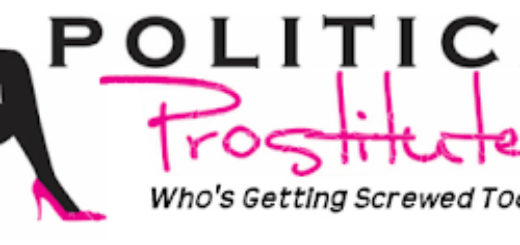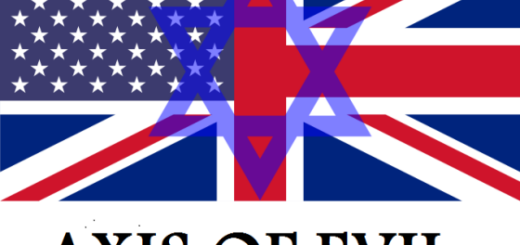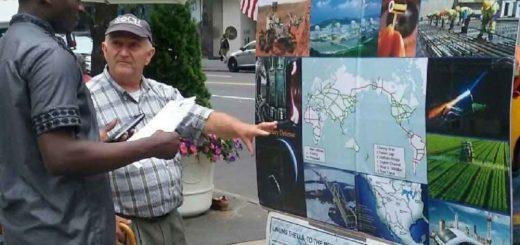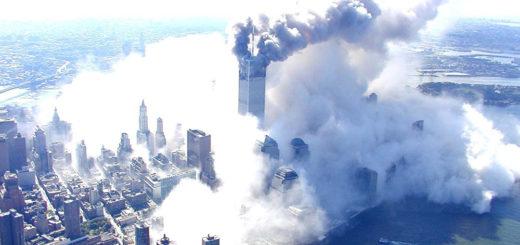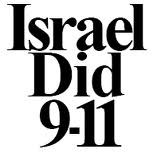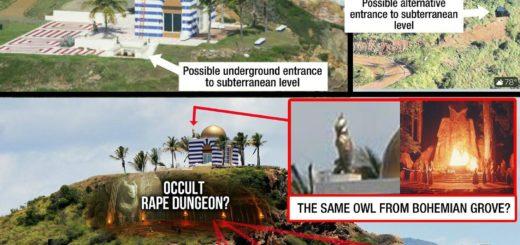Money Laundering, the Mob & the CIA-Bush Crime Family
ncmncm 6 months ago | parent | favorite | on: HSBC moves from 65 relational databases into one g… Is HSBC still the bank favored by the CIA for its money laundering needs? I had read that for an FBI agent to look into HSBC was a “career-limiting move”, but that was 10 years ago. Maybe CIA have moved to another by now? |
| rumanator 6 months ago [–] > I had read that for an FBI agent to look into HSBC was a “career-limiting move”Do you have any source that substantiates your assertion? |
When hundreds of Savings and Loans banks went bankrupt in the 1980s, the U.S. government bailed them out by transferring about $500 billion from U.S. taxpayers to a select group of extremely rich, powerful people. What these people had in common were their symbiotic relationships to the Mafia and the CIA.
1980s, USA: Money Laundering for Contras, the Mob and the CIA
By Gary W.Potter, Eastern Kentucky University.
To some, the savings and loan (S & L) scandal of the 1980s is “the greatest… scandal in U.S. history” (Thomas, 1991: 30). To others, it is the single greatest case of fraud in the history of crime (Seattle Times, June 11, 1991). Some see it as the natural result of the ethos of greed promulgated by the Reagan administration (Simon and Eitzen, 1993: 50). To others, it was a conspiracy to move covert funds out of the country for the CIA (Bainerman, 1992: 275).
S & Ls were living, breathing organisms that fused criminal corporations, organized crime and the CIA into a single entity that served the interests of America’s political and economic elite.
First National Bank (FNB):
Between 1983 and 1985, the FNB of Maryland was used by Associated Traders, a CIA proprietary company, to pay for covert operations. Associated Traders (AT) used its FNB accounts to supply $23 million in arms for covert operations in Afghanistan, Angola, Chad and Nicaragua.
Links between FNB and the CIA were exposed in a lawsuit filed by Robert Maxwell, a high-ranking bank officer who said he had been asked to commit crimes for the CIA. He said he was asked to conceal AT business activities, which by law he was required to specify on letters of credit. Maxwell alleged he was physically threatened and forced to leave his job. Attorneys for the bank said “a relationship between FNB, the CIA and AT was classified information which could neither be confirmed nor denied” (Bainerman, 1992: 276-277; Washington Business Journal, Feb. 5, 1990).
Palmer National Bank (PNB):
The Washington, D.C.-based PNB was founded in 1983 on the basis of a $2.8 million loan from Herman Beebe to Harvey McLean, Jr., a Shreveport, Louisiana businessman who owned Paris (Texas) S & L. Houston Post reporter Pete Brewton linked Beebe to a dozen failed S & Ls. Stephen Pizzo, Mary Fricker and Paul Muolo, in their investigation of the fiasco, called Beebe’s banks “potentially the most powerful and corrupt banking network ever seen in the U.S.” Altogether, Beebe controlled at least 55 banks and 29 S & L’s in 8 states. He had served 9 months in federal prison for bank fraud and was a financier for New Orleans-based organized crime figures, including Vincent and Carlos Marcello.
McLean’s partner in the PNB was Stefan Halper, who was George Bush’s foreign policy director during the 1980 presidential primaries. During the election campaign, Halper was in charge of a secretive operations center, consisting of ex-CIA operatives who kept tabs on Carter’s attempt to free U.S. hostages in Iran. Halper was later linked to “The October Surprise” and the “Debategate” scandal, in which it is alleged that Carter’s briefing papers for debates with Reagan were stolen. Halper set up a legal defense fund for Oliver North.
PNB was the bank for the National Endowment for the Preservation of Liberty, a front group run by Oliver North and Carl “Spitz” Channell, to send money and arms to the contras.
Indian Springs Bank (ISB):
ISB, of Kansas City, also had connections to the CIA. The ISB’s fourth largest stockholder was Iranian expatriate Far-had Azima, owner of air charter company, Global International Air (GIA). The ISB made several unsecured loans to GIA, totalling $600,000. In 1983, GIA went bankrupt and ISB followed suit in 1984. ISB’s president died in a 1983 car fire regarded by law enforcement officials as of suspicious origin.
GIA was part of Oliver North’s network that shipped U.S. weapons, including 23 tons of TOW missiles, to Iran by Race Aviation, another company owned by Azima. When investigating the ISB collapse, the FBI told Pete Brewton not to follow up because the CIA said Azima was “off limits” (Houston Post, Feb. 8, 1990). The assistant U.S. Attorney handling the ISB investigation was also told to “back off from a key figure because he had ties to the CIA.” In the late-1970s, Azima supplied air and logistical support to Egyptian American Transport and Services Corporation (EATSCO), owned by former CIA agents Thomas Clines, Theodore Shackley and Richard Secord. EATSCO was involved in activities of former CIA agent Edwin Wilson, who illegally shipped arms to Libya. Azima contributed $81,000 to Reagan’s campaign.
In 1981, GIA made a payment to organized crime figure Anthony Russo, a convicted felon whose record included conspiracy, bribery and prostitution charges. Russo – the lawyer for Kansas organized crime figures, an employee of ISB and a board member of GIA – later explained that the money had been used to escort Liberian dictator Samuel Doe on a “goodwill trip” to the U.S.
GIA’s Miami-based planes were maintained by Southern Air Transport, another CIA proprietary company. According to GIA employee, Franck Van Geyso, GIA pilots ferried arms to South and Central America, then returned to Florida with drugs. ISB loaned $400,000 to Morris Shenker, an owner of the Dunes Hotel in Las Vegas, a former attorney for Jimmy Hoffa and close associate of Nick Civella and other Kansas City mafia figures.
Vision Banc Savings (VBS):
In March, 1986, Robert Corson purchased the Kleberg County S & L of Kings-ville, Texas for $6 million and changed its name to VBS. A Texas judge vouched for Corson’s character in order to gain permission from state regulators for the bank purchase. Lindsey was the chair of the Bush campaign in 1988 in Harris County and later received a $10,000 campaign contribution and a free trip to Las Vegas from Corson (Houston Post, Feb. 11, 1990).
Corson was well-known to federal law enforcement agents as a “money launderer” and a “mule for the agency,” i.e., he moved large amounts of CIA cash from country to country. When Corson purchased VBS, its assets exceeded $70 million. Within four months it was bankrupt. Under Corson’s leadership VBS loaned $20 million to Miami lawyer, Lawrence Freeman, for a real estate deal (Houston Post, Feb. 4, 1990). Freeman was convicted of money laundering for Jack Devoe’s Bahamas-to-Florida cocaine smuggling syndicate and Santo Trafficante’s Florida-based organized crime syndicate. Freeman was a law partner of CIA-operative and Bay of Pigs paymaster, Paul Helliwell.
Sunshine State Bank (SSB):
The cast of characters surrounding SSB of Miami also included spies, White House operatives and organized criminals. The owner of SSB, Ray Corona, was convicted in 1987 of racketeering, conspiracy and mail fraud. He purchased SSB in 1978 with $1.1 million in drug trafficking profits supplied by Jose “Tony” Fernandez, who was later indicted for smuggling 1.5 million pounds of marijuana into the U.S.
Among Corona’s customers and business associates were Leonard Pelullo, Steve Samos and Guillermo Hernandez-Cartaya. Pelullo, a well-known associate of Philadelphia organized crime figures, tried to use S & L money to buy an Atlantic City casino as a mob frontman. He was charged with fraud for activities at American Savings in California. Samos, a convicted drug trafficker, helped Corona set up SSB as a drug money laundry and helped set up front companies that funneled money and weapons to the Contras. Hernandez-Cartaya, a veteran CIA operative who had a key role in the Bay of Pigs invasion, had a long money laundering career for the CIA and major drug trafficking syndicates.
Mario Renda:
Renda, of Long Island, brokered deposits to various S & Ls in return for loans to phony companies. He and his associates received finders’ fees of 2% to 6% on the loans, mostly to individuals with organized crime connections who subsequently defaulted on them. Renda brokered deals to 160 S & Ls, 104 of which eventually failed. Renda was convicted of stealing $16 million from an S & L and for tax fraud. He helped launder drug money through various S & Ls for the CIA and then got loans from the same S & L’s which were funneled to the Contras. An organized crime-related stockbroker, a drug pilot and Renda were all convicted in the drug money laundering case.
Source: “Organized Crime, The CIA and the Savings and Loan Scandal”
www.thirdworldtraveler.com/CIA/S&L_Scandal_CIA.html
Jeb Bush was a White House liaison
to Miami Contras and right-wing anti-Castro Cuban-Americans. In the mid-1980s, he took contributions to the Miami Republican Party from Leonel Martinez who was arrested in 1989 and later convicted of bringing 300 kilos of cocaine into the U.S.
Jeb was also connected to the drug money laundering scandal of the CIA-linked, the Bank of Credit and Commerce International, in 1986-1987.
In the mid-1980s, Jeb worked for businessman, Miguel Recarey, Jr. whose mafia links went back 20 years. During the 1980s, Recarey is thought to have embezzled $100 million from Medicare through his Miami-based company, International Medical Centers, which also treated wounded Contras at its Florida hospital.
When the Bush administration bailed out Broward Federal S & L in 1988, for $285 million in bad loans, Jeb and partner Armando Cordina (leader of the right-wing Cuban American Foundation) didn’t have to repay their $4.1 million loan.
Jeb successfully lobbied Dad in 1990 for the release from jail of Orlando Bosch, who fired a bazooka at Polish freighter in the Miami harbour in 1968 and master-minded the explosion of a Cuban airliner killing 73 people over Barbados in 1976.
Source: Covert Action, Summer 1992.
In 1983, Neil formed JNB Exploration with an investment of $100. He was named president of this oil company that eventually drilled 30 wells but never struck any oil.
Neil’s JNB partners, Ken Good and Bill Walters, contributed $160,000 to create JNB. They had business ties to numerous shady characters connected to organized crime, the CIA, arms dealers, money launderers and the Contras.
Between 1985 and 1988, Neil was also a director of Silverado Banking Savings and Loan in Denver, Colorado. Silverado lent over $200 million to Good and Walters. Neil did not disclose his connections to Good and Walters, when – as a Silverado director – he voted to grant them the loan. Good raised Bush’s JNB salary from $75,000 to $125,000 and gave him a $22,500 bonus. In total, Bush received $550,000 in salaries from Walters and Good. Neil also received a $100,000 loan from Good that was later forgiven.
In 1990, Federal regulators filed a $200-million lawsuit against Neil and other officers of Silverado Banking. Regulators determined that Neil was completely dependent on Good and Walters for his income. An expert hired by regulators said Neil suffered from an “ethical disability.”
In 1990, Neil was reprimanded by the U.S. Office of Thrift Supervision for “multiple conflicts of interest” and ordered to pay $50,000. Neil’s $250,000 legal bill was paid by a legal defense fund formed by Thomas Ashley, a friend of Neil’s father.
Sources: georgebb.hfnm.com/NonCGI/Forum1/HTML/002823.html , www. tylwythteg.com/enemies/Bush/bush15.html , www.infomanage.com/secrets/bios/bushes.html,campaignwatch.org/more1.htm and Covert Action Information Bulletin, Summer 1992.

